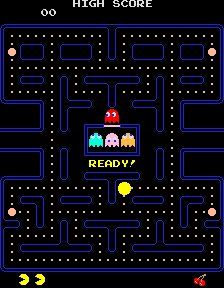KRAZY! The Delirious World of Anime + Comics + Video Games + Art runs through September 7, and presents choice examples from comics, graphic novels, animated cartoons, anime, manga, visual art, and computer and video games.
Famed designer, Will Wright acted as curator for the computer and video games section of the exhibit. If you can’t make it to Vancouver to see KRAZY! for yourself, we’ve listed the games Will Wright chose to display in chronological order by release date with a few brief explanations of why each title was chosen. These quotes were excerpted from conversations between Wright and Bruce Grenville - who helped organize the event - and can be found in the art book, KRAZY! The Delirious World of Anime + Comics + Video Games + Art, which was released in conjunction with the exhibit of the same name.

Above: 1960s pop art, anime, manga, comics, and video games have all had a major impact on modern visual media – and they’re all on display at KRAZY!
It should be noted that each of the exhibit’s curators were asked to include only seven or eight examples of works that made a significant contribution to their field. It’s also worth mentioning that each curator was invited to participate in the event based on their expertise in their field, which is why they were all asked to include at least one or two examples of their own work. According to Bruce Genville, Will Wright was reluctant to include both The Sims and Spore in the computer and video games section at first, but eventually conceded.

A tabletop version of the original Pac-Man arcade game grabs your eyes the moment you enter the computer and video games section at KRAZY! and is a great start to Wright’s tour through the past, present and future of gaming. “Pac-Man has a very seductive experiential aspect to it. The sound, color and motion make the player genuinely feel that he or she is Pac-Man. When the ghosts jump on Pac-Man, you see players jump back from the screen as if they have been jumped on. It is an instinctive physical reaction,” says Wright.

Above: KRAZY! constantly invites guests to interact with the works on display. Who could resist a trip down memory lane with a round of Pac-Man?
KRAZY! isn’t your usual art exhibit with quiet visitors politely moving from display to display. In the games section, we heard one patron wildly scream “Get that cherry!” Soon, her friend (who died in pursuit of said fruit), threw her hands in the air and let out an anguished “Noooooo!” It seems that Pac-Man’s “experiential aspect” still has a strong pull on players over two decades after the arcade game was originally released.

A television hooked up to a SNES invites you to sample Shigeru Miyamoto’s Super Mario World. “Super Mario World is about emergence – a simple set of rules that allow for a very complex system of play... it’s about building complexity out of simplicity, building one hundred complex, interesting platform levels, puzzles that you have to solve, using just a handful of very simple elements,” says Wright.
Super Mario World seemed to be the most popular station in the computer and video games section amongst the museum’s younger patrons. “Look! Look!” said one excited tyke as she tried to jump on a Buzzy Beetle before dying. Undaunted by her defeat, the young gamer tried again until she passed the dungeon area.

Above: Even children from the ‘next generation’ of gaming were drawn to Miyamoto’s 16-bit classic
We’re not surprised that the old school Super Mario World station was so popular with younger visitors. After all, Shigeru Miyamoto is famous for designing games that are particularly appealing to younger audiences. In an interview on The Learning Channel’s documentary, Gameheadz, Miyamoto explains "At some point, I realized that games could actually draw out people's emotions. Since then, my own childhood memories have been reflected in my games." Judging by the wide smile on the young girl’s face when she finished the dungeon, it looks like Miyamoto’s childhood memories are still drawing out strong emotions of 16-bit happiness from players in today’s world of HD video and ‘next-gen’ systems.

